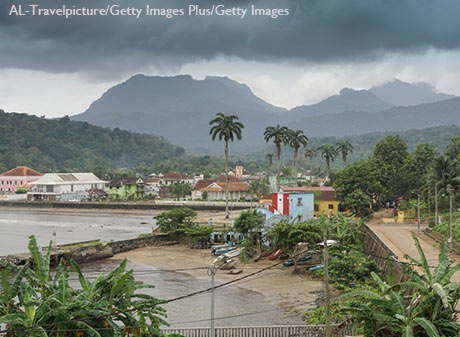COVID-19's Economic Effects on Poor and Emerging Markets

COVID-19 is a global phenomenon, but right now the world’s attention seems to be primarily focusing on China, the U.S. and Europe. The virus needs to be eradicated everywhere, including in poor countries and emerging markets.
As in the developed world, the disease will have enormous economic consequences for these countries. However, poor countries have no financial resources, and emerging markets don’t have enough. In addition, many are at a policy crossroads as they face the current state of the economy.
We know that enormous amounts of liquidity are needed to deal with the economic consequences of the virus. Two questions arise about providing that liquidity:
- How can the increase in the demand for liquidity in both poor and emerging markets be covered?
- What is the best monetary policy response when, on the one hand, a country’s central bank needs to provide liquidity, but on the other, it might be facing inflationary pressures?
Possible Sources of Liquidity
To address the first question, we turn to the roles of the International Monetary Fund and the World Bank as usual lenders of last resort. They have taken action: The IMF has put its lending capacity of $1 trillion on the table, and both the IMF and the World Bank are asking bilateral creditors to suspend debt payments from a group of 76 low-income countries. The largest of these bilateral creditors is China, which owned around 17% of low-income country debt in 2018, followed by the Paris Club group of creditors.
Suspending debt payments would help, as will the $1 trillion from the IMF, but not enough to solve the liquidity problem. At the end of the day, it seems to me that the Federal Reserve, the European Central Bank, the Bank of Japan, and the People’s Bank of China will have to provide the liquidity needed by the rest of the world on top of that needed for their own countries.
There are questions about how this would work from a practical standpoint. If it’s possible for the IMF and the World Bank to act as intermediaries, they could help with those practical issues.
Emerging Market Countries Have Extra Hurdles
In addition to the need shared with other countries for liquidity to rescue their economies, many emerging markets are facing one or both of two extra hurdles:
- An abrupt reduction in capital flows, or a sudden stop
- An economy that is highly dependent on oil as a revenue source at a time when oil prices are very low
We are seeing sudden stops in emerging markets that can correspond to output drops of 5% to 7% of GDP. Given the world's financial situation, it seems unlikely the pattern will revert soon. So that loss in output will be added to the drop from COVID-19.
Then there are countries that are oil reliant, with oil making up between 2% and 15% of total GDP and a much larger corresponding share of fiscal revenue. If we cannot restart the world economy soon, dramatic drops in the demand for oil will only push oil prices farther down, digging the hole deeper.
Currency Depreciations and Inflationary Pressures
Sudden stops and lower oil revenues can translate into large currency depreciations. Those depreciations in turn have historically generated inflationary pressures, causing central banks to keep interest rates high and liquidity low in economic downturns (for example, in 2007-08). But this time, the need for liquidity is extremely elevated.
If we think that the drop in demand is sharp enough to counterbalance the inflationary pressures from the currency depreciation, then this will not be a problem in terms of monetary policy. But presumably low oil prices and capital outflows will outlast the demand shock. Then these emerging markets’ central banks will be facing a timing issue. They need to be able to provide needed liquidity today, without compromising their mandate to keep inflation under control tomorrow.
If we think that the situation is rough in the developed world, we should think twice. From an economic standpoint, the situation is even more complicated in poor and emerging markets.
And this time around, the crisis in those countries is not just their problem: It is everyone's problem. If the rest of the world does not have the resources to eradicate COVID-19, then it will come back to developed countries and we will find ourselves in a vicious cycle.
Additional Resources
Citation
Paulina Restrepo-Echavarría, ldquoCOVID-19's Economic Effects on Poor and Emerging Markets,rdquo St. Louis Fed On the Economy, April 6, 2020.
This blog offers commentary, analysis and data from our economists and experts. Views expressed are not necessarily those of the St. Louis Fed or Federal Reserve System.
Email Us
All other blog-related questions


